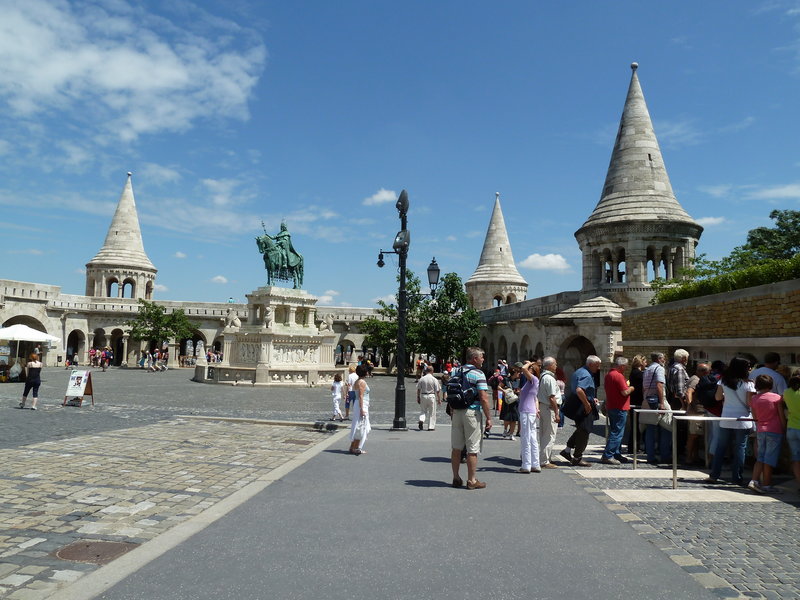Before World War II, Budapest was one of the leading cultural capitals of Europe. With Hungary’s return to democracy in 1989, it has become a popular destination for international travelers. They are attracted by the beautiful Danube River and the art, history and culture found on both sides.
Budapest is actually three separate towns: Pest on the eastern bank of the Danube with its eclectic mix of architecture from Baroque through Art Nouveau to modern, and Buda and Obuda with their cobblestoned streets and medieval castles and churches.
Our room at the Four Seasons Hotel Gresham Palace Budapest overlooked the Danube, the bridge and Buda. It’s an Art Nouveau landmark with soaring winter gardens, grand staircases, stained glass and tall vaulted ceilings.
We walked along the Danube Promenade and then crossed the historic Chain Bridge to visit the Neo-Gothic Parliament with its spires and towers and impressive dome.
St. Stephen’s Basilica was named after the founder of the Hungarian state and the Catholic Church in Hungary. Its interior icons and mosaics and 315-foot dome were most impressive, as was what has been called “the city’s most bizarre relic,” the almost 1,000-year-old mummified forearm of St. Stephen in the Holy Right Hand Chapel near the main altar.
The nearby Byzantine style Great Synagogue with its twin towers is the largest in Europe. It also houses the Jewish Museum and a most moving weeping willow sculpture in its rear courtyard in memory of the 600,000 Hungarian Jews killed by the Nazis in World War II.
Some of the finest architecture stretches from downtown Pest to Heroes Square and the Millennium Monument. Statues of famous Hungarian leaders are on the colonnade surrounding the monument. The Archangel Gabriel, who it is said offered Stephen the crown, is at the top of the central column of the monument.
We walked through the monumental Museum of Fine Arts, the city’s showcase for works of European Old Masters. It was fun climbing one of the seven conical towers at the Fishermen’s Bastion, a grand mock bastion built as a monument to the Guild of Fishermen. The nearby massive Royal Palace housed the National Gallery with its collection of Hungarian art as well as the Budapest History Museum, and Museum of Contemporary Art.
Budapest is special for another reason — the healing waters of its world famous thermal springs and baths. These highly sulphurous waters at the Gellert Bath, one of Budapest’s more than 120 thermal springs, were discovered to be medicinal back in the 13th century.
Two musical experiences were memorable: the performance of Georges Bizet’s French opera “Carmen” performed at the State Opera House and the 15th International Multicultural Music and Dance Festival on the banks of the Danube.
With its unique murals in the foyer and the gilded panels with paintings over its staircase to the chandelier and magnificent frescoes in the hall, the Opera House is one of the world’s finest.
The Danube Carnival is a 10-day multicultural festival of international dance and music. We happened upon it by accident in Vorosmarty Square as we were about to sit down to a superb Hungarian goulash dinner at the Budapest Atrium Cafe. We saw ensembles from Poland, Martinique and Romania and the Trakia Folk Dance Ensemble of Plovdiv, Bulgaria.
Charles L. Mitsakos is Professor Emeritus of Education at Rivier College.
Send questions/comments to the editors.



Success. Please wait for the page to reload. If the page does not reload within 5 seconds, please refresh the page.
Enter your email and password to access comments.
Hi, to comment on stories you must . This profile is in addition to your subscription and website login.
Already have a commenting profile? .
Invalid username/password.
Please check your email to confirm and complete your registration.
Only subscribers are eligible to post comments. Please subscribe or login first for digital access. Here’s why.
Use the form below to reset your password. When you've submitted your account email, we will send an email with a reset code.